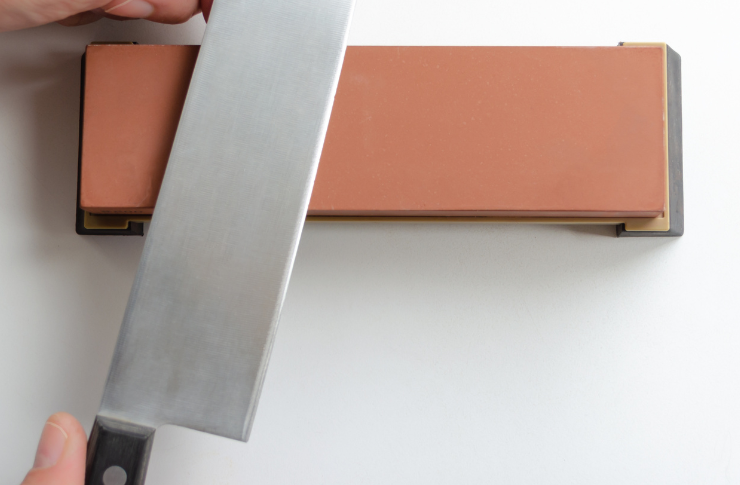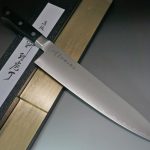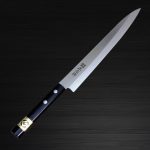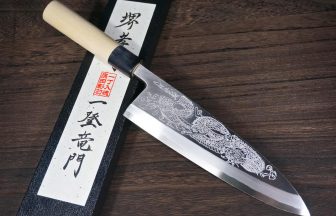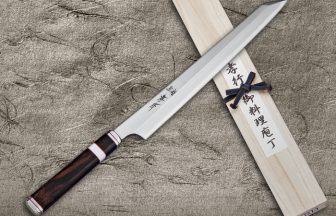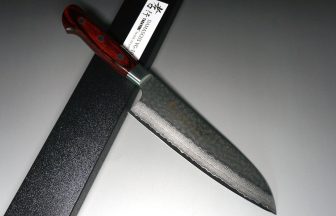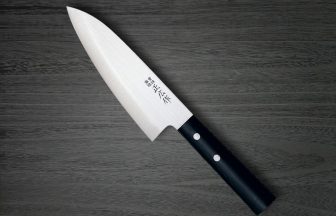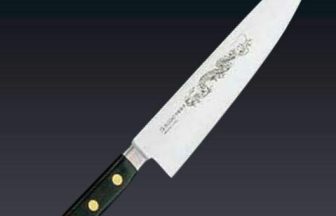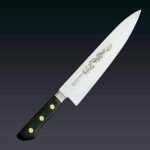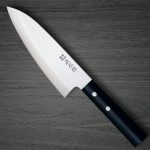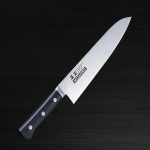The Nakiri knife, also known as the Japanese vegetable knife, is a staple tool in traditional Japanese cuisine. Here are its distinctive characteristics:
- Straight, Thin Blade: Nakiri knives typically feature a straight, thin blade, usually 5 to 7 inches long. The blade’s thinness and straight edge make it perfect for precise, straight chopping or slicing of vegetables.
- Double-Bevel Edge: Unlike some traditional Japanese knives that feature a single-bevel edge, the Nakiri knife boasts a double-bevel edge. This means that the blade is sharpened on both sides, making it more user-friendly for both right and left-handed cooks.
- Flat Cutting Edge: The flat cutting edge of a Nakiri knife allows the full length of the blade to come into contact with the cutting board at once. This makes it great for chopping vegetables with a simple up-and-down motion, and no horizontal pulling or pushing.
- Square Tip: The square tip of the Nakiri knife helps to prevent accidental piercing of the skin or flesh of vegetables or fruits, making it a safer choice for rapid chopping or julienning.
- Superior Craftsmanship: In line with Japanese tradition, many Nakiri knives are hand-forged and meticulously sharpened, reflecting a centuries-old dedication to craftsmanship.
In conclusion, the Nakiri knife is a celebration of function, tradition, and artistry. It is a quintessential tool for anyone aiming to master the craft of Japanese cuisine, offering unmatched precision and efficiency when dealing with vegetable preparations. With a Nakiri knife, each cut is a step closer to culinary perfection.

